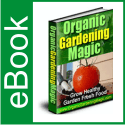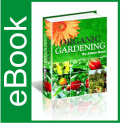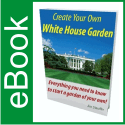Simplify your garden and simplify your life
Simplify your garden and simplify your life
Article by Lazy Susan
Simplicity and gardening dont usually go hand in hand and many people will think is it possible, practical or even that realistic? Well Lazy Susan would have to the answer is yes. But like everything else these days, it all depends, although we like to think weve got things down to a fine art in our showroom garden. We need to keep it looking as good as possible all the time, but we have a business to run and cant spend all day tending our plants. Gardening requires work, its as simple as that. You can spend hours deciding where to plant trees, shrubs and flowers, more hours making sure insects, diseases and weeds are kept at bay, and even more hours on top of that just moving plants around, trying to find the perfect location and the perfect combination that gives you that wow factor.
On one hand, gardening can be viewed as simply digging a simple hole, popping a plant in it and calling it a day. Its not guaranteed, but it works OK for some plants. Whats annoying is when it works for the novice and not your seasoned gardeners who will profess that their experience and knowledge makes them exempt from error. Nature always loves to prove it is the one whos actually in control. Yet when it really comes down to it, gardening is simple. You dont need expensive tools to dig a hole, as long as time isnt too much of a factor, then you can take an appleseed or an acorn and wait a few years for it to grow. Simple and cheap.
Generally, larger gardens will mean more work, but trust me when I say its possible to simplify larger operations. How you garden may not be the most time efficient or cost effective way to garden. For example, are you applying a nitrogen rich winter fertilizer to your lawn or aerating it in the autumn? Doing so will help to dramatically cut down your weeds, enhance winter hardiness and result in a thicker, more lush grass with fewer disease problems. Taking the right steps at the right time with the right products can significantly reduce your spring/summer workload.
If you make sure that youre taking the best steps to make plants healthy, you might want to consider cutting down one pesticide use too. Not only will it save you money and time in the spring, but think about what youve done toward improving the environment, whilst crossing another gardening to do permanently off your list. Simplifying could also involve completely changing what you plant and/or what you currently have in your garden. A hybrid tea rose is fussy and requires so much more time and input than say a low maintenance landscape roses that are easy to grow and can be as carefree as the plants you want to mix them with.
Groundcovers take less effort than grass, although saying that, anything will take less effort than trying to keep a lawn lush and well manicured. Woodchip mulch or using landscaping pepples etc takes even less effort, and comes closest to keeping things simple to manage but natural looking. Apple trees take more time than peach trees, which rank higher than cherry trees in terms of care and attention. Its hard to get a perfect pear, but at least you dont have to fertilize or prune them back. But do you really need a perfect apple, especially if you are making pie or applesauce? And there are all sorts of ways to cut down on the pounds you put in the garden, from sharing non-spreading plants with friends to starting your own from seed in a greenhouse.
Simplifying the garden simplifies your life or at least the amount of bending and kneeling and stooping down that you need to do to keep your garden healthy. And that also means cutting down on the number of things that demand your attention in your garden. You can accomplish simplicity one of two ways, The first is to cut down on the number of varieties of plants that you grow but grow enough of each variety to fill your the designated space youve set aside. So instead of three daylilies you grow 15. Instead of one kind of heuchera you grow five different types. Just concentrate on the plant types you really enjoy growing, youre good and growing and then grow them in multiples. You will have less to keep track of, as similar varieties will have similar needs and youve already got the knowhow to grow them.
Develop a garden plan
Your plan can be as simple or complex as you want to make it, but the aim is to give a sense of direction to your gardening efforts. A basic plan will help you identify that even if some things have to be put off until next year, they will get done eventually. This step alone reduces the stress of creating an easy to manage outdoor living space. What do you want this space to be like? Is it for outdoor entertaining or simply a place to relax after a busy day? A clear plan will help you make quality easy care purchasing decisions when its time to start shopping.
When choosing your gardens hard surfaces, it is worth seriously considering future maintenance. Are you starting with a deck or a cement patio? By developing the seating area first, you can begin to use the area even before the rest of the garden is finished. If the deck or patio is already installed, does it need to be refinished? Sealing it will prolong its life and make future cleaning so much easier. Remember, a little care now can add years to its life. If you are starting with bare ground, you might prefer a greener option. A patch of lawn looks nice but remember that it will need ongoing care. If your site is very shady, another option is to install patio blocks with a low growing moss between them. Its a practical and attractive alternative that doesnt need constant mowing.
Define your planting areas
Do you need to add trees? If so, the sooner the better because each year will increase their usefulness. Dont forget to consider the density of the shade they will produce at mature height and if theyll require vast amounts of pruning to keep them looking tidy. Many flowering trees are beautiful but do better situated in the corner of your garden where you dont have to deal with falling blossom or seed pods all over your decking or patio.
Also consider the flower beds themselves. If the ground is very compacted, it is worth renting a tiller or have someone do it for you, rather than toiling away with a spade or fork. Have your soil tested for ph and adjust as required to give plants the best possible environment. This is also and excellent time to have organic matter and compost worked into your soild. The better your soil is, the more successful your future gardening efforts will be. Once the beds are ready, plant permanent greenery that will become the backdrop for your seasonal additions. This is one of the secrets to having gardens that dont require starting from scratch each year. Once a permanent bush is planted, you can easily add colour and interest with a few flowering plants in front of it.
Plan to water
Not all of us can afford an integrated automatic watering system but you can simplify the task of watering during the summer. Even if you cant afford timers this year, you could setup a simple PVC sprinkler system that can be manually operated. Doing so will give you better water coverage and save you standing around holding the hose or lugging a watering can around from plant to plant. Timers can be added when your budget allows. If that is outside your budget and you have to rely on a hose and sprinkler system, consider adding separate hoses for each area that you have to water. A simple shutoff splitter will direct the water where its needed without having to reposition the hose each time. You are more likely to stay up with the necessary watering if all you have to do is turn a tap on.
Use landscape fabric
Some people use strips of plastic but unless you poke holes in it, the rain cant drain away. I always advise people to only use the specialist landscape fabrics such as Weedex Fabric Membrane, as it will supress weeds without the need for chemicals and allow rain water to freely drain away. Whatever you choose, putting mulch on top of a weed barrier keeps weeds from taking over your garden. If any do sprout, you will find that they have shallow root systems and will be much easier to pull out.
Add permanent edging
It not only defines the edges of your flower beds, but also helps to keep grass from creeping into them. Permanent edging not only adds visual interest to a flower bed, but it also physically separates your flowers from potentially invasive neighbors, such as grass and weeds. Plastic, wood and masonry are the most commonly used landscape edging materials. While installing plastic edging generally requires only simple hand tools, installing brick or poured concrete edging often requires specialized masonry tools and power equipment.
Pick tables and chairs that are weatherproof and easy to clean
If you are in an area that gets a lot of rain, add garden furniture that is easy to clean such as cast aluminium. If you havent got a place you can store your furniture when the weather is poor, then invest in a good quality patio cover. Try and prevent any fabric such as cushions or parasols from getting damp and store inside during the winter months. Make sure you take the recommended steps to weatherproof you furniture. For example, if you have timber garden furniture, make sure you regularly coat with a weatherproof sealant.
Choose a garden statue over a fountain
Both add charm and help to give your garden an established look but fountains need to be cleaned on a regular basis and they can be pretty high maintenance. If you want something that makes soothing sounds, try larger windchimes that ring in a lower note. If youre looking to simply inject some character and beauty into your garden then consider a garden sculpture or statue they can add flair and personality to your outdoor garden space. A work of art in your garden can make a bold statement about your personality and taste. It can also provide colour, interest and beauty to your outdoor spaces. Sculptures are increasingly being found in UK gardens, and its not just classical pieces, in recent years weve seen a significant explosion in the number of artists creating some fantastic contemporary garden sculptures. As gardens get smaller its not always possible to create interest with a full planting scheme, especially as many people only have a small city garden or even just a balcony to work with. But you can do a lot to emphasise a space just with one or two garden sculptures, especially things that are a little bit different.
Simplify your garden with shrubs
Whether you like to follow the fads and fashions of gardening or not, those of us who are creaking and groaning as we garden should be thankful for the rise of the mixed border. There are lots of good shrubs and very large plants to use in our gardens that are easy to care for but still look great. They flower in different times of spring, summer and autumn, so that you can have a virtually all-year-round blooming season. They come in an infinite array of foliage shapes and textures. And many of them are very easy to maintain its almost hassle free gardening. The trick is to avoid shrubs that require constant pruning or cutting back, such as buddleias. Also avoid those that drop messy fruit, and those that send their seeds out so prodigiously that you are forever weeding their offspring out of the lawn and the rest of your garden. Trust Lazy Susan A little preplanning and following some of tips will help you enjoy your simplified garden all Summer long.
About the Author
Lazy Susan is a small family business that specialise exclusively in wicker, rattan and metal garden furniture, specifically cast aluminium. Visit http://www.lazysusanfurniture.co.uk to find out more and view our complete product range.
Use and distribution of this article is subject to our Publisher Guidelines
whereby the original author’s information and copyright must be included.

 June 11, 2012
June 11, 2012 







